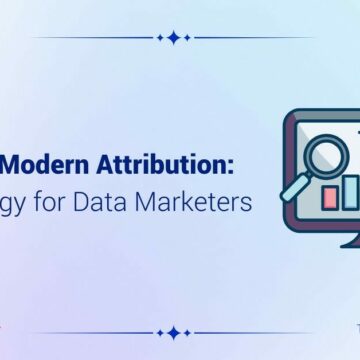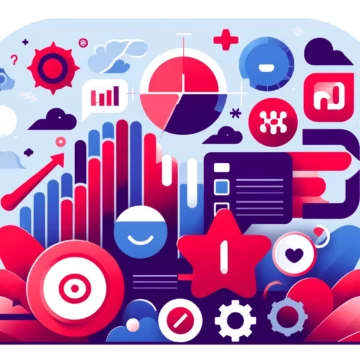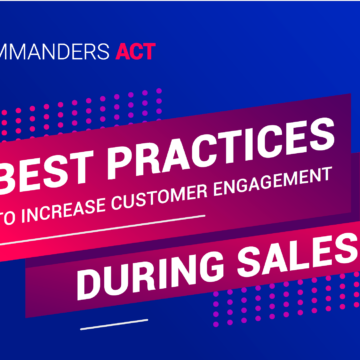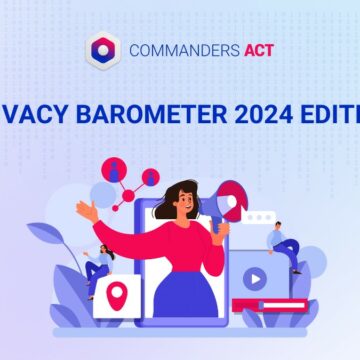What data strategy when media budgets are at half mast?
25/01/2023 |

Since the summer of 2022 and for the first half of 2023 at least, media budgets, including digital, are like the economy: gloomy. How can we continue to work with data in this context? On which pillars should we rely to get the full value of interactions with audiences? Here’s an overview.
A low tide that is slow to rise. This is the picture that emerges from the forecasts for the evolution of the digital advertising market. Yes, digital is in better shape than the overall advertising market, but the ebb is there. In France, the players (publishers, trading desks) consulted by JDNet at the end of 2022 confirm a decline in programmatic since the summer of 2022 and anticipate a dull first half of 2023.
Globally, advertising growth estimates have been revised downwards: GroupM forecasts an increase of 5.3% in global advertising investments in 2023 (the estimate was 6.4% six months earlier). If we take a look at the US market, and more specifically at ad spending on social networks, there too a cold wind is blowing on the forecasts. For Insider Intelligence, nearly $10 billion disappeared between the December 2022 estimates and those published in March 2022. As the analysis goes on, a consensus is emerging: the slowdown should continue during the first half of 2023. At least.
Digital media buying in poor shape
This small form of digital media investment can be explained. In a very uncertain global context, brands anticipate a drop in consumption and modulate their investments accordingly. “And when you have to cut back, digital media buying is easily deactivated/reactivated, unlike investments in content or SEO. There, cutting budgets can result in regressions “, says the digital strategy manager of a major industrial player. In this context, with less media investment, how can you continue to develop your data?
Focus on organic levers
Unsurprisingly, efforts are focused on organic levers, for both acquisition and retention. On the acquisition side, those who have already built up an “SEO income” (i.e., SEO work that guarantees regular traffic), will at least maintain it, and even develop it by supporting their content production. This traffic is especially interesting if it is generated by content that covers the different types of search intentions (informational, navigational, commercial, transactional). The visits generated by this means therefore represent qualified traffic that can be worked on, at least in part, as a result of consent management.
Another channel that is the object of all the attention during these times of media dearth, emailing. In all its forms: from the “acquisition cold email” to the regular newsletter that intends to maintain a lasting relationship with an audience. These emails are precious supports to enrich the data: beyond the classic click and opening rates, other indicators such as the level of loyalty, the typology of the consumed contents allow to refine the knowledge of its audience to better activate it later.
More than ever, think omnichannel
Making the most of the traffic gained through these types of levers means optimizing the “playbooks”. To develop consideration and conversion, these automation sequences often combine emails, but brands have every interest in thinking about them on an omnichannel scale. For example, to trigger them on the basis of an in-store action (purchase, delivery of a loyalty card) or to develop them by integrating into the scenario an interaction with the call center (to provide advice and confirm an interest).
Whatever the organic levers used, they all have one thing in common: unlike media buying, the aim here is not to “overpressure an audience” but to address it with appropriate messages, at a measured pace and in full compliance. A delicate balance which, to be maintained, requires the support of 3 pillars:
Pillar #1: Consent Management
Now an essential part of the martech stack, the CMP (Consent Management Platform) must help identify the formula that guarantees a consent rate consistent with the benchmarks of your business sector. A formula to “ABtest” by varying design elements but also the language used, which must be a happy compromise between brand tone, pedagogy and legal imperatives.
Pillar #2: Identity Resolution
Equally important is the ability to reconcile interactions around a unique ID for each user. Without this identity resolution, it will be difficult not to over-solicit audiences and, even more so, to send them content adapted to their expectations. If technical prerequisites, especially in emails (read our white paper “a world without cookies”) are necessary, it is also important to think of campaigns to multiply the opportunities to associate emails and cookies.
Pillar #3: Audience segmentation
Finally, to fully capitalize on organic levers and first-party data, the ability to segment audiences holds the keys to effective activation. The objective is to capture as many signals as possible in order to create segments of varying degrees of complexity and to personalize messages. And, once again, by thinking on an omnichannel scale, therefore capturing signals from all horizons and on a large scale, in order to give teams the material to enrich the dimensions of these segments.
Backed by these three pillars, the teams in charge of acquisition and retention will be able to improve customer knowledge. And gain precision in the allocation of media budgets for which, mechanically, brands can expect an increased return.











